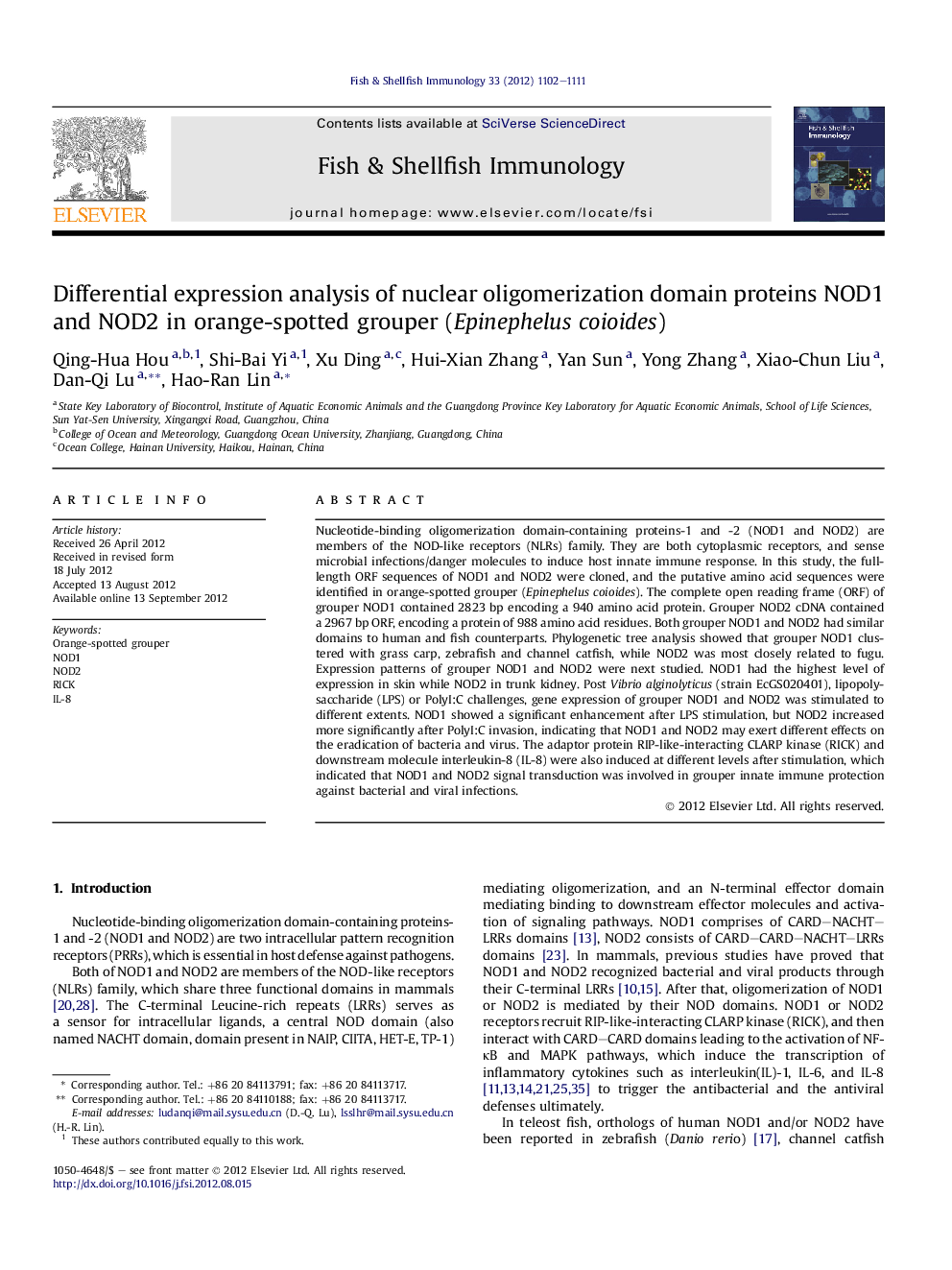| Article ID | Journal | Published Year | Pages | File Type |
|---|---|---|---|---|
| 2432324 | Fish & Shellfish Immunology | 2012 | 10 Pages |
Nucleotide-binding oligomerization domain-containing proteins-1 and -2 (NOD1 and NOD2) are members of the NOD-like receptors (NLRs) family. They are both cytoplasmic receptors, and sense microbial infections/danger molecules to induce host innate immune response. In this study, the full-length ORF sequences of NOD1 and NOD2 were cloned, and the putative amino acid sequences were identified in orange-spotted grouper (Epinephelus coioides). The complete open reading frame (ORF) of grouper NOD1 contained 2823 bp encoding a 940 amino acid protein. Grouper NOD2 cDNA contained a 2967 bp ORF, encoding a protein of 988 amino acid residues. Both grouper NOD1 and NOD2 had similar domains to human and fish counterparts. Phylogenetic tree analysis showed that grouper NOD1 clustered with grass carp, zebrafish and channel catfish, while NOD2 was most closely related to fugu. Expression patterns of grouper NOD1 and NOD2 were next studied. NOD1 had the highest level of expression in skin while NOD2 in trunk kidney. Post Vibrio alginolyticus (strain EcGS020401), lipopolysaccharide (LPS) or PolyI:C challenges, gene expression of grouper NOD1 and NOD2 was stimulated to different extents. NOD1 showed a significant enhancement after LPS stimulation, but NOD2 increased more significantly after PolyI:C invasion, indicating that NOD1 and NOD2 may exert different effects on the eradication of bacteria and virus. The adaptor protein RIP-like-interacting CLARP kinase (RICK) and downstream molecule interleukin-8 (IL-8) were also induced at different levels after stimulation, which indicated that NOD1 and NOD2 signal transduction was involved in grouper innate immune protection against bacterial and viral infections.
► NOD1 and NOD2 genes were identified in orange-spotted grouper, with their gene structure, putative amino acid sequenced. ► Gene expression study of NOD1, NOD2 and their downstream molecules after stimulations would help to understand their roles in fish immunity. ► The function division of grouper NOD1 and NOD2 presented here will give a valuable insight into the grouper's pathogen recognition.
